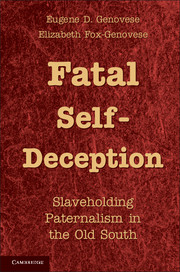3 - Strangers within the Gates
Published online by Cambridge University Press: 05 June 2012
Summary
And the Lord said unto Moses and Aaron, This is the ordnance of the Passover: There shall no stranger eat thereof: But every man's servant that is bought for money, when thou has circumcised him, then shall he eat thereof. A foreigner and a hired servant shall not eat thereof.
– Exodus 12:43–45When southern slaveholders dared, they proclaimed themselves masters of all they surveyed despite the ambiguous status of hired whites. Yet, “plantation” and “household” were by no means identical terms. Able plantation employees, white and free black – even most tutors and governesses – won respect but, with few exceptions, did not qualify as members of the “family, white and black.” David Brown, a northern missionary, observed that Southerners used “household” in the “Scripture sense, including slaves, but not hirelings.” Hugh Legaré of South Carolina, among others, traced the southern distinction between slaves and free workers to ancient Jewish law and to Roman law and tradition, which reduced employees to servile status.
Sundry White Servants
Transatlantic public opinion stigmatized white servants as dishonest, lazy, and untrustworthy. Hence, when Paul Trapier of South Carolina entered Harvard in 1822, he was astonished to find himself waited on by white servants. By the 1850s, however, some elite families in port cities – Charleston, Mobile, Savannah – had white servants. The hiring of a good white nurse occasioned self-congratulation in Charleston since, as a contributor to the Southern Presbyterian Review complained, native whites, no matter how poor, shunned servants’ work. Clara Solomon of New Orleans hated to lose Mary, her Irish maid, who left to take care of her own relatives: “These Irish girls, their most fault is in having such a quantity of relations.” Rosalie Roos of Sweden reported that Charlestonians considered black servants much more reliable than “lazy” and “insolent” whites, who, if dissatisfied, left at will. Grace Brown Elmore of Columbia expressed a common thought – black servants were much more loyal than white.
- Type
- Chapter
- Information
- Fatal Self-DeceptionSlaveholding Paternalism in the Old South, pp. 40 - 59Publisher: Cambridge University PressPrint publication year: 2011

